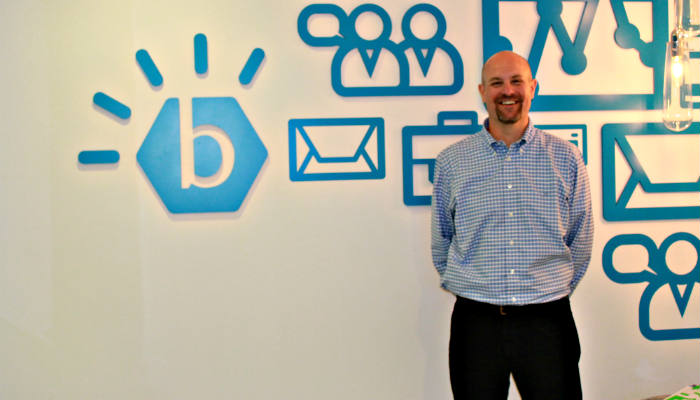
In fall of 2009, John Jenkins and Mark Waterstraat were anxiously watching the Affordable Care Act debate unfold, knowing it could potentially sink their company.
Jenkins and Waterstraat had created Benaissance in 2006 around processing COBRA-compliant insurance payments for employers. (COBRA allows employees leaving a company to remain on their company’s health plan for a period of time.)
“The first concern John and I had was that the Affordable Care Act might legislate out COBRA,” said Waterstraat.
If that happened, they would have a flagship product for compliance with a law that didn’t exist.
“As iterative drafts would come through House and Senate committees, we were reading all the drafts, word-searching for ‘COBRA,’ watching to see if the whole foundation of our business was going to be in trouble,” said Waterstraat.
Giving customers their money back
Back in 2006, Jenkin’s had already developed a business for outsourced payment processing. It was at that point that he partnered with Waterstraat to develop his in-house software into a separate SaaS business.
They first called it CoCo Development, later Benaissance. They had contracts with 14 companies to use the 2001 platform Jenkin’s had created.
In April 2006 they went live and quickly realized the software was not going to work.
“As soon as we put any kind of load on it, it wasn’t able to handle the scale,” said Waterstraat.
Instead trying to jury-rig the software to make it fly, they decided to give all 14 companies their money back.
They told the companies they wouldn’t charge them, but that if they wanted to stay on they could, while they developed new software.
Surprisingly, 10 of them chose to stay. They would wait from June 2006 to April 2008 for the new product.
“We had a very small team that supported them [on the original software] while we started completely from scratch,” said Waterstraat.
“Build it the right way”
Jenkins and Waterstraat then brought in John Borders to hire a team and lead the development of the new software system.
“John was something of a legend in the .NET community,” said Waterstraat of the late Borders.
Throughout the process, Jenkins was fiercely committed to making a solid product.
“When John Borders said to John Jenkins, ‘We need to do this, and it’s going to add an extra four months to the development schedule,’ every time John Jenkins said, ‘Do it the right way,’” said Waterstraat.
Then everything changed
They went live with the final product, COBRApoint, in June 2008.
But by February, in response to the recession, the government changed the rules for COBRA and gave employers 60-days to be compliant.
“Because we had a brand new, object-oriented system we could quickly pivot the system to comply, whereas calcified 15-year-old, hard-coded systems really couldn’t,” said Waterstraat.
Within 45 days COBRApoint was fully compliant with the new rules.
“That was a watershed for our business. We were the only one in the market that did that.”
Tidal wave 2: The Affordable Care Act
Shortly after navigating the Recovery Act, Benaissance was faced with a whole new challenge: the Affordable Care Act.
By the end of that same year, Waterstraat and Jenkins were searching every draft in congress for changes to COBRA.
“Come to find out, COBRA wasn’t mentioned at all,” said Waterstraat. “But the new state exchanges were.”
They pretty much laughed us out of Washington
They began analyzing what these new exchanges would be like. They realized the exchanges were essentially multi-carrier consolidated billing.
“It looks like just what we do, only on a larger scale.” said Waterstraat.
So Benaissance took 11 of their employees to Washington to meet with officials. Waterstraat calls it their “Mr. Smith Goes to Washington” moment.
“We [argued] that we should do the billing for all the state exchanges in the country,” said Waterstraat. “We had one scanner at the time. They pretty much laughed us out of Washington.”
An extraordinary year
Benaissance realized that they could still bid on state jobs as a subcontractor to a larger prime contractor.
While they were bidding on jobs across the country, they were also working on adapting COBRApoint into a system for state exchanges called ExchangePoint.
“It took the core of COBRApoint and put the ACA rules on top,” said Waterstraat.
With most of the contracts in place by the end of 2012, Waterstraat calls 2013 an “extraordinary year.”
“We had 28 concurrent go-live projects, while still building the system, while learning how to go from being a 30-person company to being a 105-person company,” said Waterstraat.
Waterstraat believes they pulled off such a stunning transformation due to the strong fundamentals from years earlier—long before the Affordable Care Act was even an idea.
“That could only have happened because of the foundation,” said Waterstraat. “Those days when John Jenkins told John Borders, ‘Do it the right way.’”
“The market is ready-made for us”
It was a messy, complicated time in the industry, but Benaissance considers it a major success for them.
“Every invoice that was supposed to go out on October 1st [2013] went out,” said Waterstraat. “We really collected money. People really got health insurance. And in the process we tripled the size of our business.”
They realized that they had played a small part in a very big event.
“The fact that we got to turn on our TVs in our hotel room at 2 o’clock in the morning and see that we were part of something historic was certainly fun,” said Waterstraat.
Benaissance is now well-positioned for the future of the industry: private exchanges.
“The marketplace is ready-made for us,” said Waterstraa




